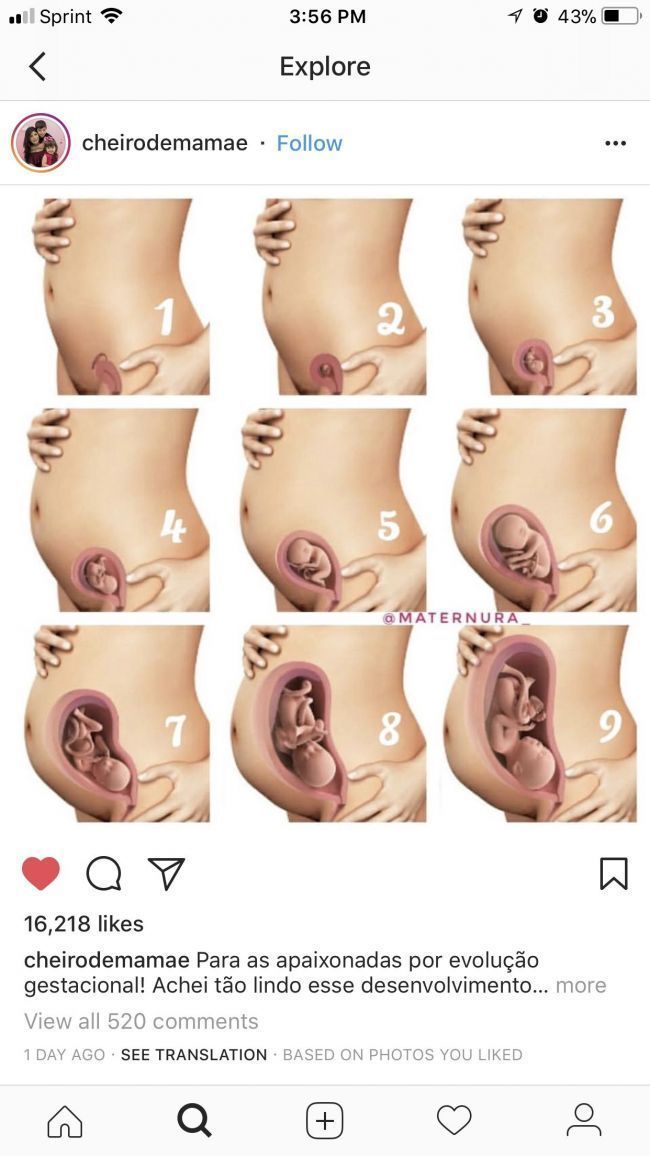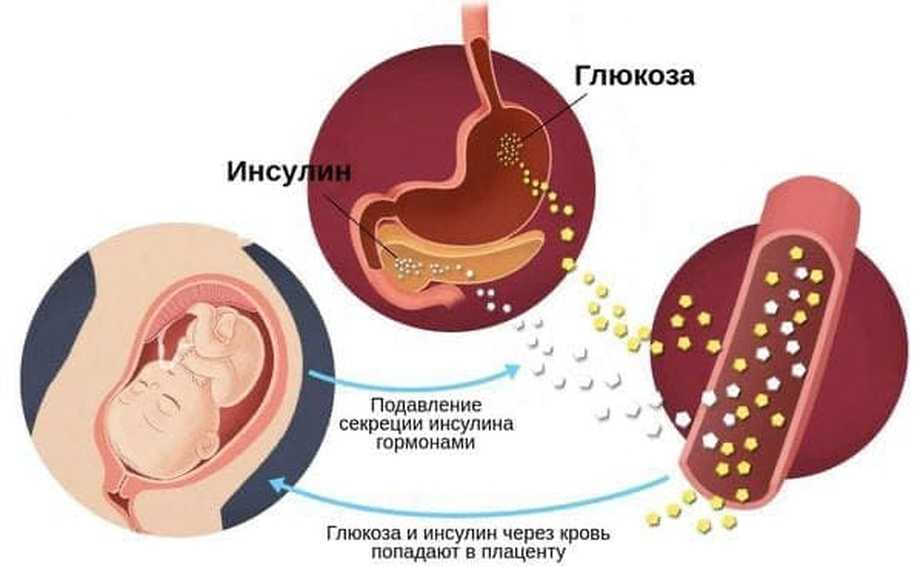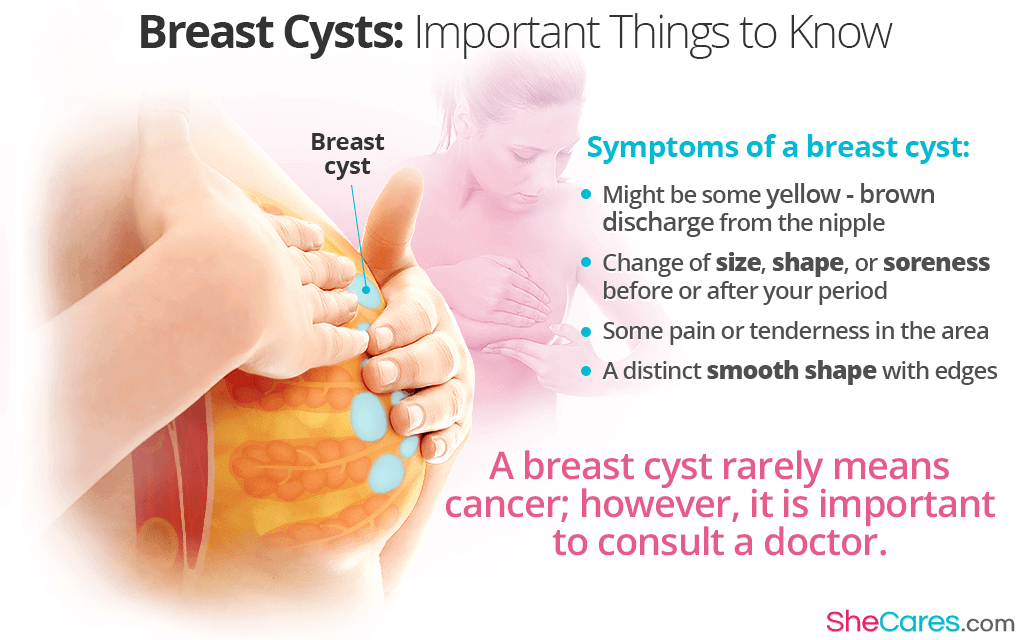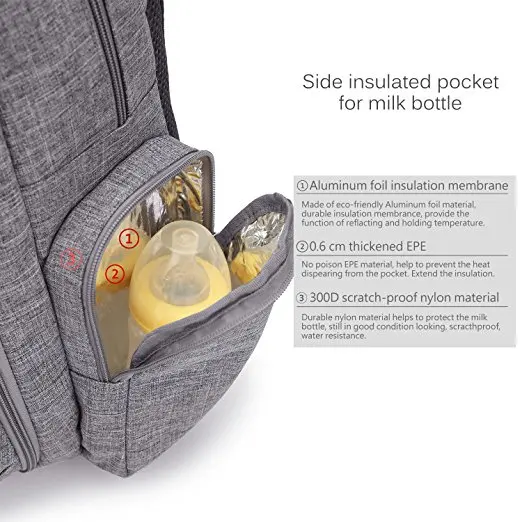What does it feel like when your cervix dilates
What Are Signs of Cervical Dilation?
As a doula, you will be asked about signs of cervical dilation. Your clients will want to know when to contact you, when to call their midwife or doctor, and when to head to their birthing location. While you cannot perform cervical dilations, you can help your clients (and yourself) by understanding signs of dilation.
Every labor is unique, and signs can vary. However, there are several signs that indicate cervical dilation is likely occurring. You can use this information to help educate your clients. They can use this information to make informed decisions about their care.
Signs of Cervical DilationAs mentioned, every labor is unique. This means that even if one has birthed before, the signs can vary. Some people have every symptom and labor stages are quite noticeable. Others have subtle or harder to detect signs and symptoms leaving them wondering whether they are even dilated or if they could be fully dilated.
Here are 6 signs of cervical dilation
#1: “Lightening Crotch” or Vaginal PainTermed lightening crotch because it feels like a sudden shooting pain, this vaginal pain sometimes occurs due to pressure on nerves. As baby engages lower into the pelvis, they are likely to apply pressure to the cervix. While this can occur long before labor, sometimes it is a sign of early dilation.
#2: Backache and Menstrual Like CrampsLike lightening crotch which can occur throughout pregnancy, backache and cramps can simply be pregnancy or dilation. As baby descends and applies pressure to the cervix, back pain can begin or worsen.
Early dilation often feels like menstrual cramps as the cervical changes cause pain and cramping noticed in the lower part of the uterus. It is the same sensation and location as menstrual cramps. Active labor tends to be felt in a larger area but can be a similar sensation as cramping (with more intensity of course).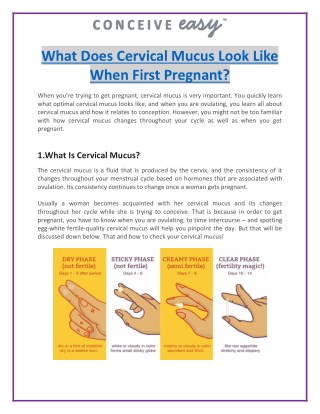
While both backaches and cramping can occur during pregnancy, when they are signs of cervical dilation, the intensity, frequency, and exact feel tend to change.
#3: Bloody Show – A Sign of Cervical DilationNot the loveliest term, but it accurately describes a small amount of blood showing cervical changes. Some notice this, others do not. Often this is like spotting, occasionally a brief light flow, and mixed with mucus.
The mucus plug is releasing and the slight cervical changes with dilation can cause this light bleeding.
Anytime a client experiences spotting or bleeding, they should contact their midwife or doctor for appropriate instructions.
Generally, if they are term, their provider will describe at prenatal appointments if they need to let them know about spotting, bleeding, etc. In some cases, a provider will let them know what bloody show looks like and whether or not they need to contact immediately or wait for more symptoms.
If your client is less than 37 weeks, has any symptoms of infection, or it is a flow without any mucus, they should contact their provider immediately.
Bleeding and spotting can be symptoms of other things besides dilation. Any concerns should be directed to their provider.
#4: Less Talking, But Possibly More NoiseDuring active labor, speaking during a contraction becomes quite difficult if not impossible. This does not mean not wanting to talk, this is an inability to speak through the contraction.
However, at the same time, clients might begin to moan or vocalize, often involuntarily. This vocalizing is a way to cope with the increasing intensity of contractions. When a client is unable to speak through a contraction it is often a sign of active labor and thus they are likely dilated beyond 3-5 centimeters.
#5: IntuitionWhile our modern lifestyle does not always require us to pay attention and trust our instincts, our bodies are still quite instinctual.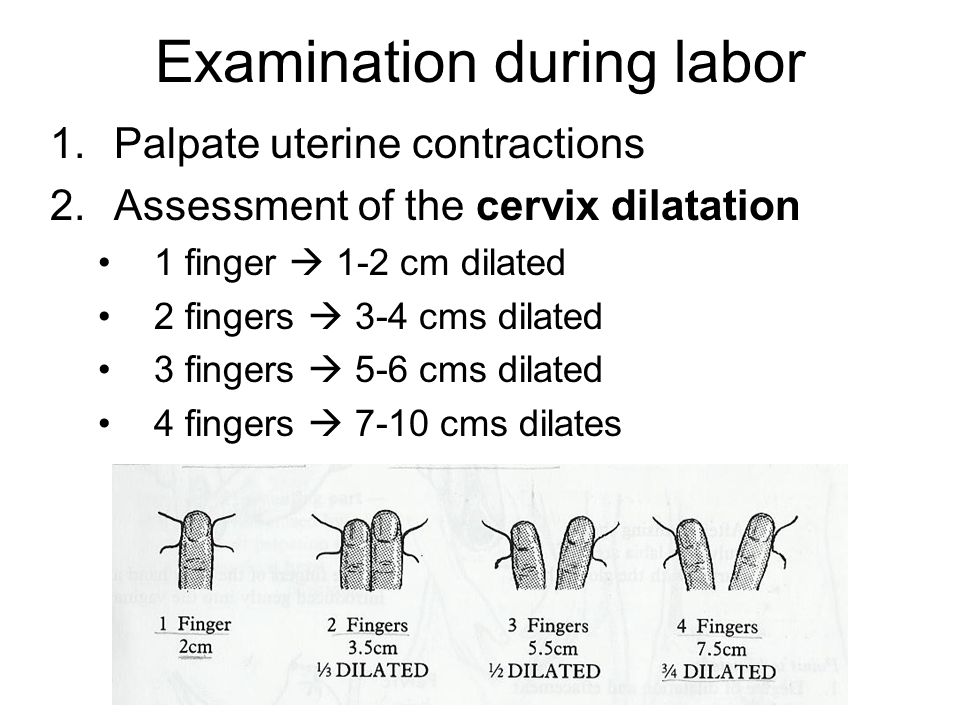 Many are able to know they are in labor and progressing or may sense labor is imminent.
Many are able to know they are in labor and progressing or may sense labor is imminent.
As doulas, we can encourage our clients to trust their instincts. When we educate prenatally about signs of dilation, signs of labor, etc., we can help remind them of their natural instincts.
#6: Less ‘Politeness’ – a Sign of Cervical DilationIt is quite likely your client will be pleasant, conversational, and generally polite during your consults, prenatal visits, etc. When you arrive for labor, if you notice changes in their personality, being short with partner, you or staff, there is a good likelihood labor is progressing.
The intensity of contractions combined with heightened hormones can understandably make many less polite. From language to stripping nude, these typical birth behaviors would otherwise be seen as impolite.
As a certified doula, understanding signs of cervical dilation will help you educate your clients and be a good support.
Cervix Dilation | 9 Signs You're Dilating
Cervix dilation is a critical part of labor.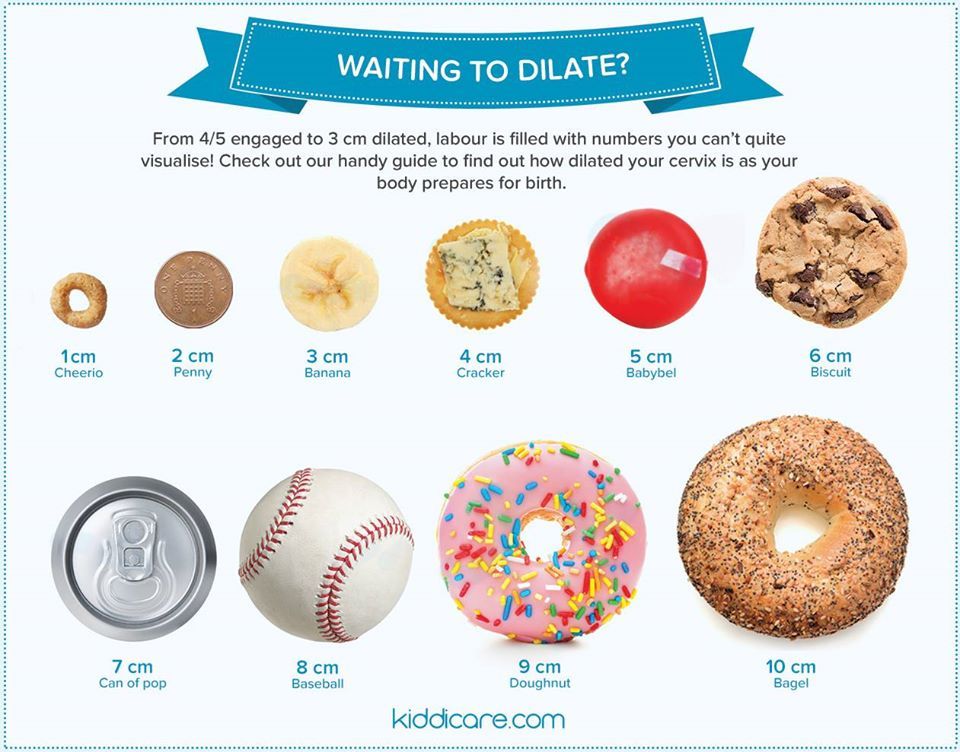
The cervix, which is normally closed to keep the baby safe during pregnancy, now becomes fully dilated to allow the baby to descend through the birth canal.
Imagine your uterus, during pregnancy, as an inflated balloon. You can think of the cervix as the lower part, where you tie the balloon.
Labor contractions help the closed cervix to become a fully dilated opening.
This is the first stage of labor and, as it progresses, you might want to know the signs you’re dilating.
It’s perfectly natural to ask: How do I know if my cervix is opening?
There are several signs of cervix dilation, which some women will notice without the need for an internal cervical check.
Cervix dilation and effacement
Before it can begin to dilate, the cervix must soften and shorten. This is called cervical effacement. If this isn’t your first baby, your cervix might efface and dilate simultaneously.
Cervical dilation is the actual opening of the cervix and it’s measured in centimeters.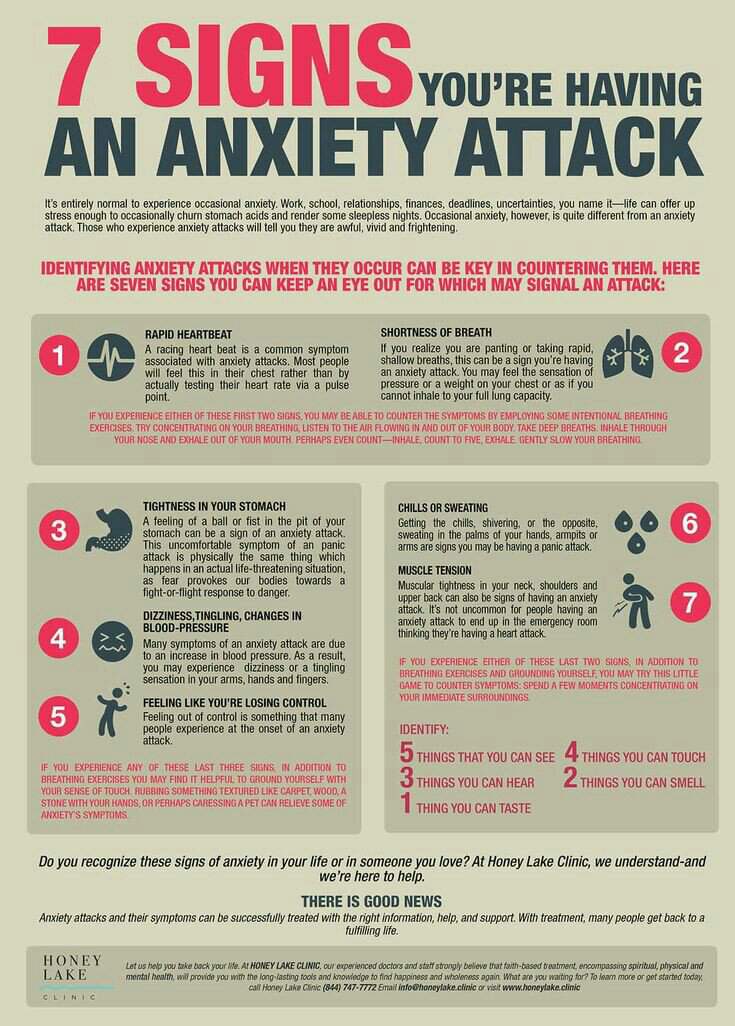 Dilation is used to determine the different stages of labor.
Dilation is used to determine the different stages of labor.
Your midwife or doctor might offer to perform a cervical check. These findings are usually plotted in a cervix dilation chart alongside with other data, such as frequency of contractions, stage of labor.
As a blind technique, it’s not as important to determine whether the cervix is 5 cm, 6 cm or 7 cm. What’s important to know is whether the cervix is working efficiently.
For a first time mother, it can take up to 2 hours per cm dilated, especially up to 3 cm, depending on many factors – for example, which phase the cervix is at.
Cervix dilation and the stages of labor
Of all the stages of labor, Stage 1 is usually the longest and it’s all about the cervix. Due to contractions, the cervix opens until it reaches 10 centimeters.
Early labor begins with irregular contractions as the cervix starts to change. The length of this stage of labor varies.
Your expectations might play a significant role here, especially if this is your first time having a baby and you’ve passed your due date.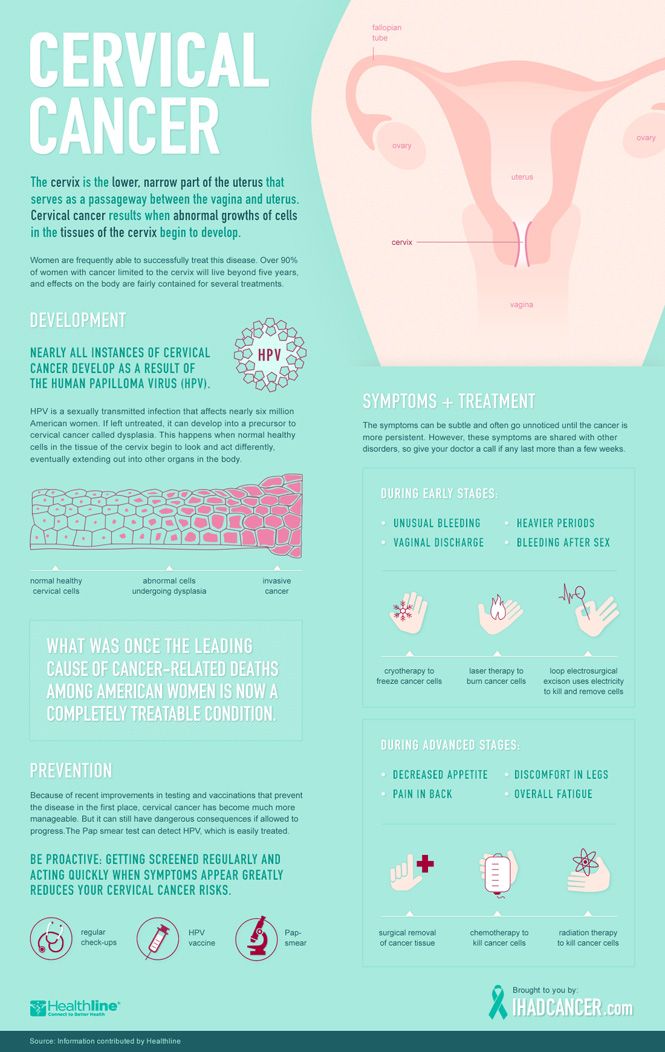
During this phase, the cervix goes from closed to 4 cm dilation.
Active labor has an increasing regularity to it. As labor progresses, women feel the contractions closer together, stronger, and longer-lasting.
In active labor, the cervix will dilate from 4 cm to 10 cm. 10 centimeters means there’s no cervix left.
Then Stage 2 begins and the baby is ready to descend through the birth canal.
Stage 3 finishes with the delivery of the placenta.
Signs you’re dilating during labor
Understanding how your body works at each stage of labor helps you and your carers to know if your cervix is dilating effectively.
You can opt not to have cervical checks during any stages of labor. Your doctor or midwife can use the information listed below to assess dilation.
Cervical dilation symptoms
Not all women will notice symptoms of cervical dilation at the beginning of labor. Some signs will be more obvious than others and you’re probably keenly aware of any changes that are happening in the last few weeks of pregnancy.
It’s usually only in hindsight, when you’re holding your baby in your arms, that you think back and have an ‘ah-ha moment’ about that niggle or sensation.
Can you feel your cervix dilating?
As your cervix starts to thin and soften, you may or may not notice twinges and sensations in that area of your pelvis. This can be as much you trying to convince yourself something is happening though!
The whole point of contractions during active labor is to open or dilate the cervix, so your baby can be pushed out. We tend to think of feeling contractions in the uterus but the actual action of the contractions on the cervix is what can be felt during labor.
To what degree you feel these changes or contractions depends a great deal on how prepared and supported you are to have a positive birth experience. Fear and stress can make you feel tense, slowing down the production of oxytocin and causing you to experience increased pain.
Check out What Do Contractions Feel Like? Here’s Our Best Explanation for more information.
9 Signs your cervix is dilating
Want to know the most common cervix dilation symptoms? Here are 9 signs for you to tell whether your cervix is dilating.
#1: Lightning crotch
Lightning crotch is an unmistakable pain that happens to many women as they get closer to their due date.
The term describes sharp, shooting pains felt in the vagina. The cause? The pressure of your baby’s head as it descends into the pelvis. It pushes on nerves and causes lightning-like shocks.
When cervical dilation begins, it might also cause sharp vaginal pain.
#2: Hello bloody show
Of all the cervix dilation symptoms, this one is very obvious to the eye.
During pregnancy, the cervix forms a seal called the mucus plug. This prevents bacteria from traveling up from the vagina and causing infection.
Discharging a brown or pink-tinged mucus is an early sign of cervix dilation.
Effacement of the cervix causes small blood vessels to break. This causes the mucus to appear as pink or brown.
It’s important to seek medical advice about vaginal bleeding. This is especially the case if:
- You’re earlier than 37 weeks
- The bleeding changes to bright red (not blood-streaked)
- The bleeding becomes pronounced and less mucus accompanies it
Find out more in Bloody Show | 8 Facts You Need To Know.
#3: Cramping and backache
Ok, you’re very pregnant with a full-term baby and you’re an expert on cramps and aches.
If they occur low down, just above your pubic bone, this can be a sign your cervix is dilating. It might feel something like the cramping ache you have just before, or at the start of your period.
You might also feel a dull ache in the lower part of your back, which comes at regular intervals.
This can be the start of labor contractions.
#4: Feel your fundus
The basic mechanics of labor are often mixed up in people’s minds.
Most people tend to think of the process as: cervix dilates, uterus contracts, baby is born.
In fact, for the cervix to dilate, the uterus needs to contract first.
Before labor begins, the uterus has a thick layer of muscle which is even all over. When contractions begin, the muscle at the bottom of the uterus is pulled up as the cervix begins to open.
You can read more about What Your Uterus Does During Labor.
The fundus (the top part of your baby bump) thickens as the cervix dilates. You can feel this during a contraction by checking how many fingers you can fit between the fundus and your bra line.
At the beginning of labor, you should be able to fit five fingers in the space.
As your cervix dilates and the baby starts to descend, the fundus will rise and you will fit fewer fingers in the space.
#5: Make some noise
During early labor, you can talk and move about.
Eventually, as your cervix gets more cm dilated you might want to focus, breathe, and move your hips – but certainly not hold a discussion!
Contractions become more intense during this stage, as the cervix becomes more cm dilated.
As labor progresses, you’ll probably feel the need to stop talking and focus on your baby.
It might surprise you how vocal you are during contractions; you might find yourself moaning, singing and roaring, as well as breathing.
Being unaware of what others are doing or saying is also a sign your cervix is dilating further.
The more your cervix dilates, the further you’ll go into this state. When you’re nearing full dilation, you might make new sounds, which are deeper and throatier – yep, that roaring we mentioned earlier.
#6: The purple line
It might sound like an old wives’ tale but the purple line can be used to measure cervical dilation; it’s a method that’s backed by research.
Basically, the purple line is exactly what its name suggests.
As the baby’s head moves down, a reddish-purple or brown line creeps up from the anus to the top of the cleft of the buttocks. It’s present in most women, and the length of the line correlates with cervical dilation.
Due to its placement and the intensity of labor, it might be difficult for women to assess their own purple line, even with the help of a mirror. Your care provider can see it easily, though, and determine the stage you’re in.
#7: Intuition
We should always take intuition into consideration – especially with regard to our own bodies.
Although intuition is an important aspect of life, we might not pay too much attention to it in many circumstances. Pregnancy, though, is a perfect time to reconnect with ourselves and our babies.
When you wonder whether or not you’re dilating, get in contact with yourself and listen to what your body is saying.
#8: Degree of politeness
You’ll know you’re reaching the transition phase, between Stage 1 and Stage 2, when you no longer care about anyone else.
Getting naked, swearing, and burping, as though you’re on your own, are definitive signs you’re reaching 10 cm.
The transition phase is usually quite intense and your birth team can offer you plenty of support.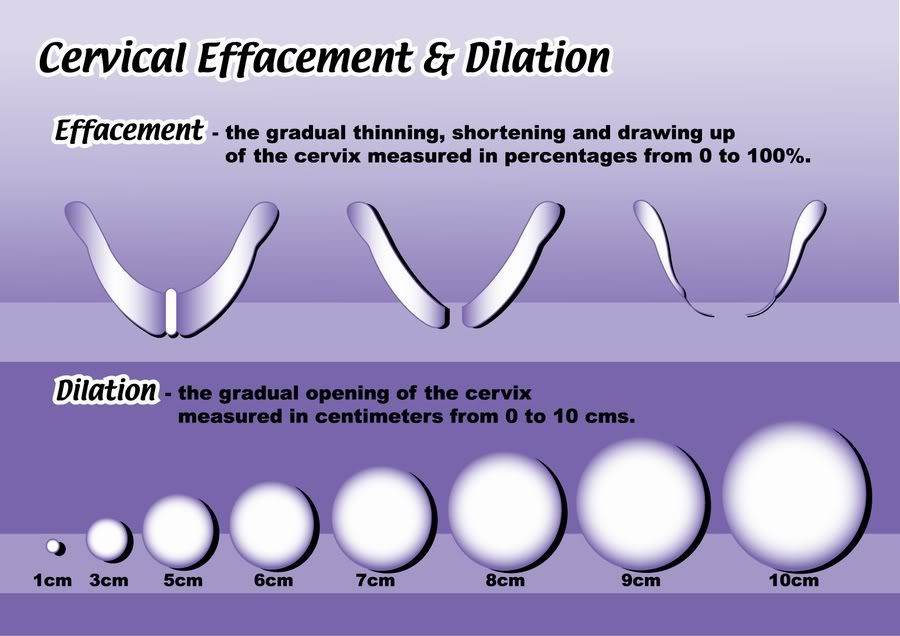
#9: Cervical checks
The easiest way for the doctor or midwife to assess dilation is to do a cervical check. This isn’t necessarily the easiest way for women, especially when they’re in active labor.
It involves lying down on your back and having a care provider insert two fingers into your vagina. This is the way to assess the stage of dilation (how many centimeters) but also the position of the baby.
The cervix is a sphincter that must open to allow your baby to pass through.
It’s affected by your sense of safety and support during labor. The results plotted in the cervix dilation chart can be inconsistent, depending on your emotional state of mind.
Cervical checks are a routine part of hospital maternity care but it doesn’t mean they’re mandatory.
You can read more about this in Are Cervical Checks During Labor Necessary?
Checking your own dilation is possible and, unlike hospital cervical checks, you don’t have to do anything with the information you discover.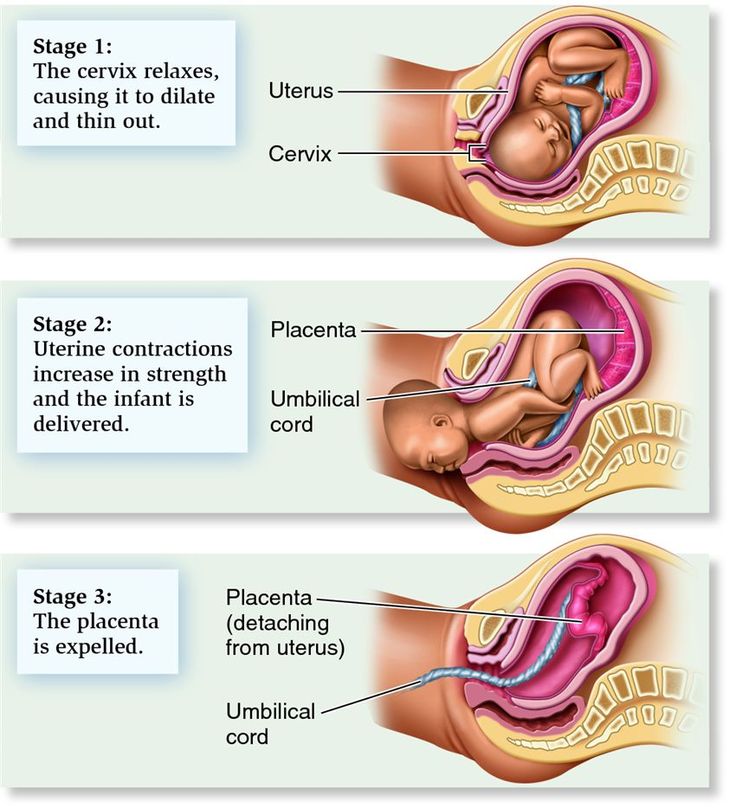
For some women, body awareness is empowering. Becoming familiar with your cervix outside pregnancy can help you understand the phase your cervix is in.
You can check regularly to see what ‘normal’ feels like, and what it’s like when cervical dilation starts.
Always wash your hands and keep your fingernails short if you decide to check your own cervix.
To avoid the risk of infection, never insert anything into your vagina if your waters have broken.
The TRUTH About Natural Birth
MAXIMISE your chances of getting the birth you want… MINIMISE your chances of
a disappointing or traumatic birth experience. Learn from some of Australia’s
best educators – you’ll feel MORE CONFIDENT heading into birth.
CAN YOU HANDLE THE TRUTH? Click to find out…
+ Popular Questions Our Readers Ask
Q: What should you do to avoid a faint blue line as a pregnancy test result?
A: If you want to avoid the confusion or uncertainty of a faint blue line pregnancy test result, simply research and buy a pregnancy test kit that has been designed to detect hCG in very low levels. Or, you can do another test at a later date.
Or, you can do another test at a later date.
Q: When do you conceive a boy?
A: If you’re wondering when to conceive a boy, the best time is the day before ovulation. According to Doctor Shettles, this gives the faster (but shorter living) male sperm a higher probability of fertilising the egg first.
Q: When do babies speak?
A: Babies start to speak around 11 months of age. It’s usual for a baby to first say the words ‘mama’ or ‘dada’ at this age. Other first words are possible, if a baby has been exposed to it often enough.
Q: What is the best hot tea for pregnancy?
A: The best hot tea for pregnancy is raspberry leaf tea. This tea is loaded with important minerals such as magnesium, iron, and calcium. Raspberry leaf tea also helps tone the uterus for labor, when consumed during the last trimester.
Important to know - Health of a Petersburger
The total duration of childbirth and their course
The total duration of childbirth depends on many factors: age, physique and physical condition of the woman, her psychological mood, the speed of cervical dilatation, first pregnancy or repeated, the size of the child, the type of presentation and a number of other points.
Labor activity proceeds differently for all women, but the main periods of childbirth are clearly distinguished: 1st period - the period of contractions, the longest and most intense, 2nd period - the direct birth of a baby, 3rd period - the birth of the afterbirth (placenta). nine0008
First stage of labor (opening period)
As the name implies, during this period there is a gradual opening of the cervix as a result of regular contractions of the uterine muscles. Contractions occur with a decreasing interval, while they themselves become longer and more frequent.
The dilation period is the time elapsed from the onset of regular contractions until the cervix is fully dilated. During this period, the birth canal is prepared for the passage of the fetus through them with all the fetal formations. nine0008
Cervical dilatation occurs gradually: at first the cervix is smoothed out, then the pharynx opens up to 3-4 cm and at the end of the first stage of labor up to 10 cm.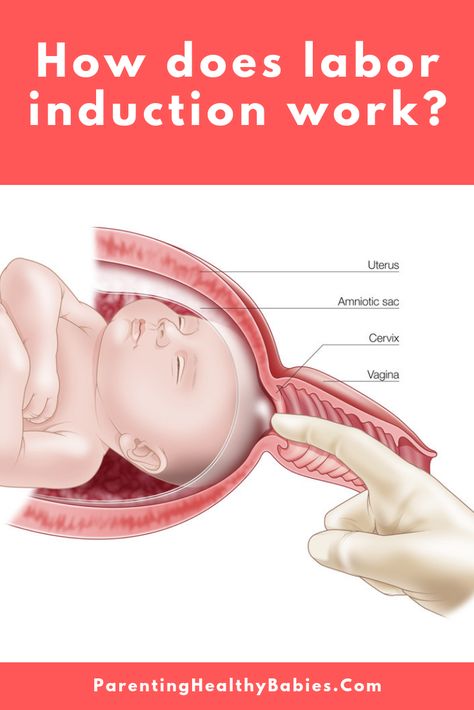 This is already a complete dilatation of the cervix. With it, during contractions, the fetal bladder becomes tense and bursts at the height of one of them, the anterior portion of amniotic fluid is poured out.
This is already a complete dilatation of the cervix. With it, during contractions, the fetal bladder becomes tense and bursts at the height of one of them, the anterior portion of amniotic fluid is poured out.
The first stage of labor is the longest and consists of three phases:
1. Latent phase (lasts 5-6 hours). It is characterized by the establishment of regular contractions, with an interval between them of 10-15 minutes. Latent, or hidden, this phase is called because the contractions of the uterus during it are painless or slightly painful. By the end of the phase, the cervix is definitively flattened and opens about 4 cm.
2. Active phase (lasts 3-4 hours). Contractions become more intense, last at least 20 seconds, and the interval between them is reduced to 5-6 minutes. Normally, during the active phase, amniotic fluid is poured out, which contributes to a faster full disclosure of the uterine pharynx. By the end of the phase, the uterus opens by 8 cm.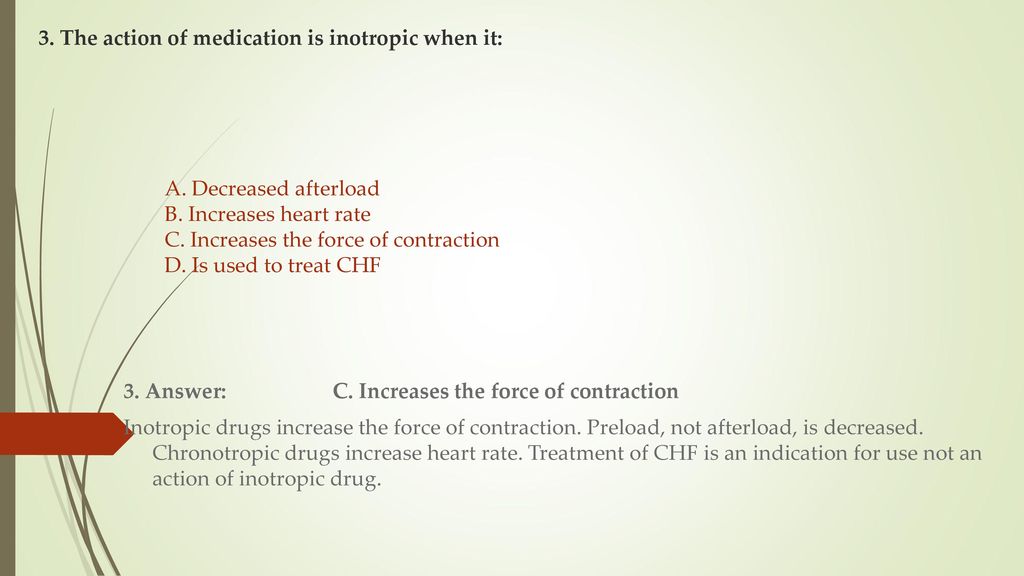 This phase is not always clearly manifested, but it is nevertheless distinguished due to the usual weakening of contractions during disclosure from 8 to 10 cm. The child's head descends and stands in the narrow part of the small pelvis, which necessitates a slower and smoother process. Already in the transitional phase, the woman in labor feels the desire to push, to push the baby out. But in order for the head to pass through the birth canal without the risk of injury, it is necessary to achieve cervical dilatation up to 10 cm.
This phase is not always clearly manifested, but it is nevertheless distinguished due to the usual weakening of contractions during disclosure from 8 to 10 cm. The child's head descends and stands in the narrow part of the small pelvis, which necessitates a slower and smoother process. Already in the transitional phase, the woman in labor feels the desire to push, to push the baby out. But in order for the head to pass through the birth canal without the risk of injury, it is necessary to achieve cervical dilatation up to 10 cm.
Second stage of labor (exile period)
The period of exile is the time from the moment of full opening of the pharynx until the birth of the fetus.
It is the second stage of childbirth that is their culmination, because for a short time (compared to contractions) the long-awaited birth of the baby takes place.
After the discharge of amniotic fluid, contractions temporarily stop. The volume of the uterine cavity decreases, the uterine cavity and vagina appear as a single birth canal.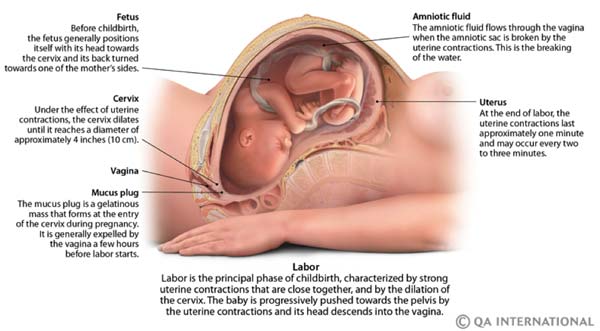 Contractions reappear and become more intense. They are joined by attempts - contractions of the muscle press (abdominal wall, diaphragm and pelvic floor). The frequency and intensity of contractions and attempts are constantly increasing. The head descends and compresses the nerves of the sacral plexus. A woman has a strong desire to squeeze the head out of the birth canal, she is looking for supports for her arms and legs to strengthen her efforts. nine0008
Contractions reappear and become more intense. They are joined by attempts - contractions of the muscle press (abdominal wall, diaphragm and pelvic floor). The frequency and intensity of contractions and attempts are constantly increasing. The head descends and compresses the nerves of the sacral plexus. A woman has a strong desire to squeeze the head out of the birth canal, she is looking for supports for her arms and legs to strengthen her efforts. nine0008
Pushing is a lot of physical work. During attempts, a woman experiences maximum physical stress (blood pressure rises, pulse and respiration become more frequent). During the attempts, the woman holds her breath, and in the intervals between them she rests and "gathers her strength for a new attempt."
In the process of one of the attempts, the head is born. Next, the shoulders are born (first the front, then the back) and the torso. Following the fetus, the posterior amniotic fluid is poured out with an admixture of cheese-like lubricant. nine0008
nine0008
A woman in labor, having experienced severe fatigue, rests after hard work (pulse and respiration rate decrease).
Third stage of labor (postpartum period).
The afterbirth period is the time from the birth of the fetus to the birth of the placenta. During this period, the placenta separates from the walls of the uterus and the birth of the placenta (placenta with membranes and umbilical cord).
In the process of separation of the placenta from the walls of the uterus, the uteroplacental vessels are damaged, which is normally accompanied by blood loss in the amount of 100-200 ml, without adversely affecting the woman's condition. After the birth of the placenta, the uterus contracts sharply, becomes dense, which is necessary to stop bleeding in the area of the placental site; its bottom is in the middle between the womb and the navel. nine0008
During this period, the woman's pulse and respiration normalize. Her demeanor is calm. Chills can sometimes be observed (as a reaction to the transferred strong physical stress).
The third period is no longer as exciting and tense as the previous two. The child was born and the matter remains for the small - the separation of the placenta, or placenta. Nature provides for the resumption of contractions a few minutes after the birth of the baby, necessary for effective exfoliation from the uterus of tissues that nourished the fetus during pregnancy (placenta, membranes, umbilical cord). nine0008
Three periods of physiological labor - the natural end of a nine-month wait. Most likely, during the birth process itself, the woman in labor will not care what the period or phase of childbirth is now, but it is still desirable to know about them, at least for greater certainty before going to the hospital.
TIME OF DELIVERY - Moscow Regional Center for Public Health and Medical Prevention (MOTSOSIMP)
During pregnancy, a woman is concerned about many issues, but most of all she is interested in the time of delivery. This is usually associated with the fear of pain, any complications, and with the most important question - how will the birth end for the mother and child? All these fears are in vain.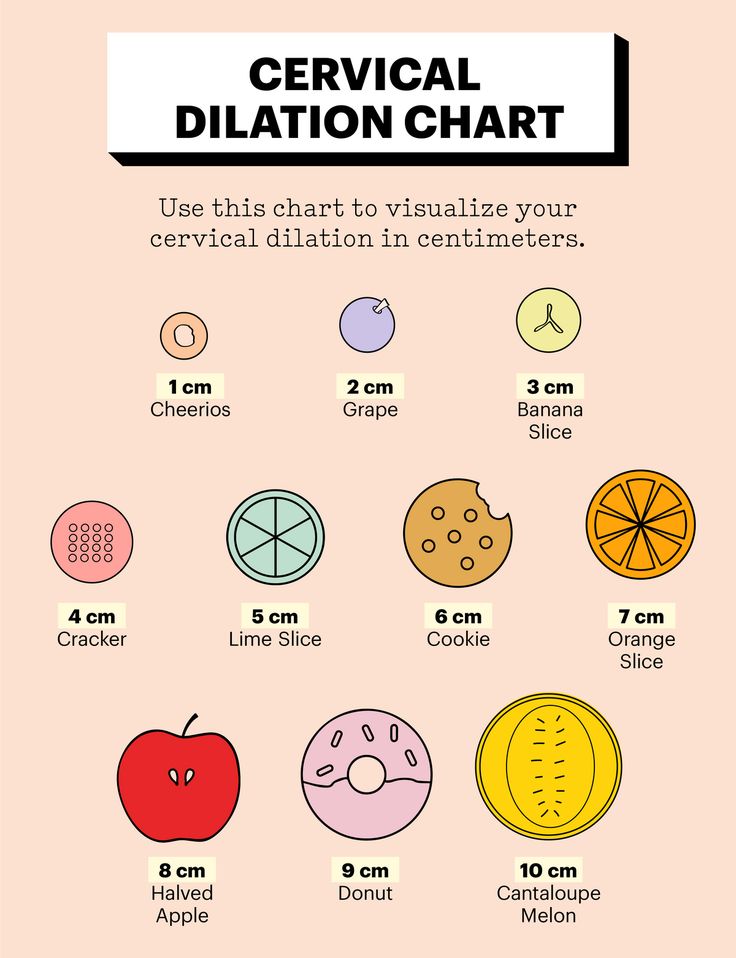 Modern obstetrics has vast experience in preparing pregnant women for childbirth and special monitoring of the course of childbirth, which makes it possible to timely diagnose complications from the mother or fetus and provide adequate assistance to both. Finally, methods have been developed by which a woman herself can contribute to the successful course of childbirth and reduce pain. nine0008
Modern obstetrics has vast experience in preparing pregnant women for childbirth and special monitoring of the course of childbirth, which makes it possible to timely diagnose complications from the mother or fetus and provide adequate assistance to both. Finally, methods have been developed by which a woman herself can contribute to the successful course of childbirth and reduce pain. nine0008
Pregnancy lasts an average of 280 days (40 weeks) from the first day of the last menstrual period. If you count 3 months ago from this date and then add 7 days, this will be the approximate date of birth. For example: the last menstruation was on December 10, therefore, childbirth can be expected on September 17.
It is advisable to remember the day of the first fetal movement. Primiparous women feel it in the middle of pregnancy (20 weeks), and multiparous women a little earlier (18 weeks).
It will be possible to speak most accurately about the date of birth if the gestational age is established.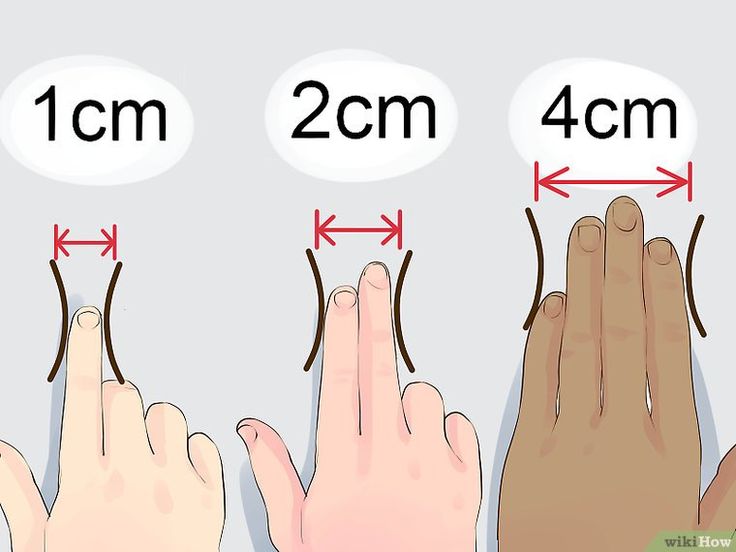 It can be determined by the doctor by the size of the uterus, which correspond to certain terms of pregnancy.
It can be determined by the doctor by the size of the uterus, which correspond to certain terms of pregnancy.
With sufficient certainty, it is possible to determine the duration of pregnancy and, therefore, childbirth according to the ultrasound examination of the fetus.
Birth before 37 weeks of gestation is considered premature, and after 42 weeks - late.
Term delivery, that is, on time, is considered a birth that began during a full-term pregnancy. It is known that the duration of full-term pregnancy varies from 37 completed weeks (259days) up to 42 weeks (294 days). Starting at 38 weeks pregnant, you can expect to give birth every day.
Harbingers and onset of labor.
It is not possible to determine the day of delivery in advance, but there are a number of signs by which one can judge its approach.
Harbingers of childbirth:
1. The pregnant woman feels that she has become easier to breathe; this is due to the fact that the fetal head sank lower and pressed tightly against the entrance to the bone pelvis. ;
;
2. Increased amount of vaginal discharge, may turn brown or pink; nine0008
3. Separate uterine contractions appear - "training" contractions - irregular, short and quickly passing when stroking the abdomen;
4. In the lumbar region there are often weak, dull, quickly passing pains;
5. As a rule, a pregnant woman loses body weight.
When these signs appear, you should prepare for a trip to the maternity hospital. You can not go out of town and leave the house for a long time, as contractions may suddenly begin or amniotic fluid will pour out. But it is quite possible that you will have to be patient and wait. The interval between the appearance of precursors and childbirth can be several days, and 2-3 weeks. nine0008
Start of labor
The onset of labor is indicated by the appearance of bloody, spotting discharge from the vagina. This leaves the "birth plug", that is, the contents of the cervix, which begins to open; the appearance of a "birth plug" means that labor will begin in the next 24-48 hours.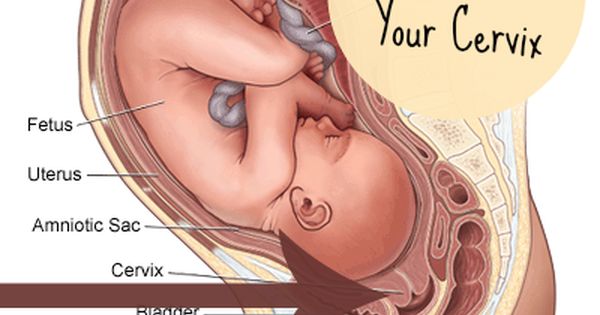
Amniotic fluid rupture
It is important to pay attention to the amount of water that can "gush" unexpectedly or pour out in a thin stream. Normally, the waters are light or slightly pinkish, without the admixture of bright blood, white lumps of the fetus's original lubricant can be seen in them. However, the waters may have a greenish or brown color, which is due to the ingestion of the original feces - meconium. This should be reported to the doctor, as meconium in the waters may indicate fetal discomfort. nine0008
After the discharge of water, you must immediately go to the maternity hospital, as a long anhydrous period is fraught with the risk of infection of the fetus and the birth canal of the mother. To avoid infection, do not tightly close the vagina with a pad or insert a tampon, you can not take a bath, only a shower.
Regular labor pains
The main thing that is characteristic of labor pains is their regularity, repetition at first every 15-20 minutes, then more and more often, longer and stronger. These are true labor pains that open the cervix. In contrast, false contractions usually have an irregular rhythm, do not intensify and can stop if you change the position of the body. However, false contractions also perform an important function - they prepare the cervix for childbirth, which becomes soft, short, its channel opens, that is, it matures for childbirth. nine0008
These are true labor pains that open the cervix. In contrast, false contractions usually have an irregular rhythm, do not intensify and can stop if you change the position of the body. However, false contractions also perform an important function - they prepare the cervix for childbirth, which becomes soft, short, its channel opens, that is, it matures for childbirth. nine0008
Normal childbirth in nulliparous women lasts an average of 12-14 hours, and in multiparous women 6-8 hours.
Periods of labor
The onset of labor is considered to be the appearance of uterine contractions, rhythmically repeating every 10-15 minutes. Contractions gradually increase, and the interval between them decreases. With the onset of labor, a pregnant woman is already called a woman in labor.
If the labor is too long, the woman is helped. Doctors of ancient Greece said that the sun should not rise twice over the head of a woman in labor. nine0008
There are three stages of childbirth: cervical dilatation, expulsion of the fetus and the postpartum period.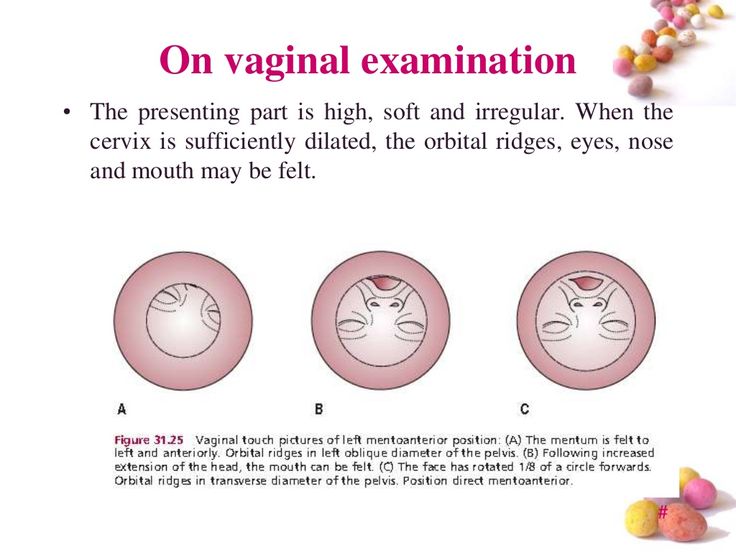
The first stage of labor is the gradual opening of the cervix
It occurs under the influence of regular contractions. Contractions over and over again stretch the circular muscles of the neck, making it thin and supple. The wedging of the fetal bladder into it and the pressure of the fetal head are also aimed at this. Slow, gradual opening of the cervix begins 2-3 weeks before delivery. In most women, the cervix “ripens” for childbirth, that is, it becomes short, soft, with a channel open by 2 cm. nine0008
The dilation period is the longest in childbirth. It lasts about 9-10 hours for nulliparous women and 6-7 hours for multiparous women. The duration of contractions during this period increases to 1.5 minutes, and the interval between them decreases from 10-15 minutes to 1 minute.
In the first stage of labor, a woman in labor should follow the recommendations of the doctor and midwife and actively help herself: breathe calmly and evenly through the nose, relax outside the contraction.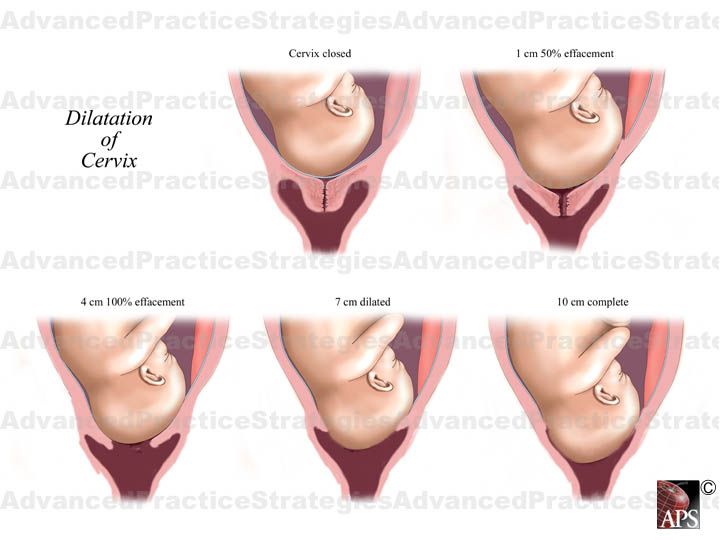 When the cervix opens completely, the fetal head can descend into the pelvic cavity. nine0008
When the cervix opens completely, the fetal head can descend into the pelvic cavity. nine0008
The second stage of labor - expulsion of the fetus
When the fetal head reaches the exit of the pelvis, that is, it sinks to its bottom, attempts are added to the contractions - contractions of the abdominal muscles. Due to this, intra-abdominal pressure increases, which helps to expel the fetus from the uterus.
The duration of the exile period is on average 1-2 hours in nulliparous women and less than an hour in multiparous women.
During the period of exile, it is especially important to follow the instructions of the doctor and midwife, helping yourself and the child to safely go through this very important stage. An experienced doctor and midwife will take the baby after birth, lightly pat him on the buttocks, the baby will scream, his lungs will expand, and he will begin to live an extrauterine life. nine0008
Labor is not over yet - the baby is still connected to the mother by the umbilical cord, and the placenta is in the uterine cavity.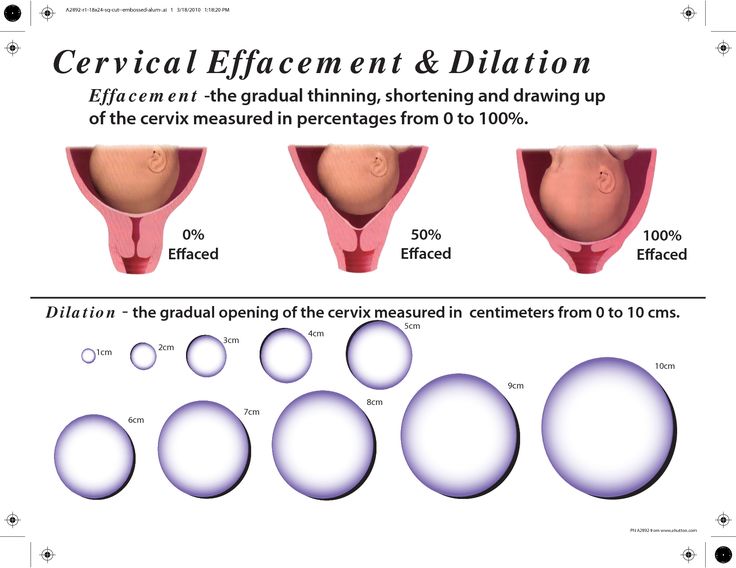 The afterbirth (children's place) is the placenta, umbilical cord and membranes of the fetus.
The afterbirth (children's place) is the placenta, umbilical cord and membranes of the fetus.
In the third, consecutive period, the umbilical cord is cut
However, neither the mother nor the child will feel pain - there are no painful nerve fibers in the umbilical cord. The cry of a child immediately after birth is a good reaction to a new environment for him. A sign is put on the child’s pen, on which the surname, name and patronymic of the mother, the year, day and hour of birth of the child, as well as his gender are indicated. nine0008
The third stage of labor lasts on average 5-10 minutes, but can be delayed up to 1 hour. The woman in labor feels weak contractions that separate the placenta from the walls of the uterus, and then with one or two light attempts, the child's place comes out. Now the birth is over.
After giving birth, a woman (she is now called not a woman in labor, but a puerperal) stays in the maternity ward for two hours under the close supervision of medical personnel who monitor the condition of the woman and the amount of bloody discharge from the genital tract.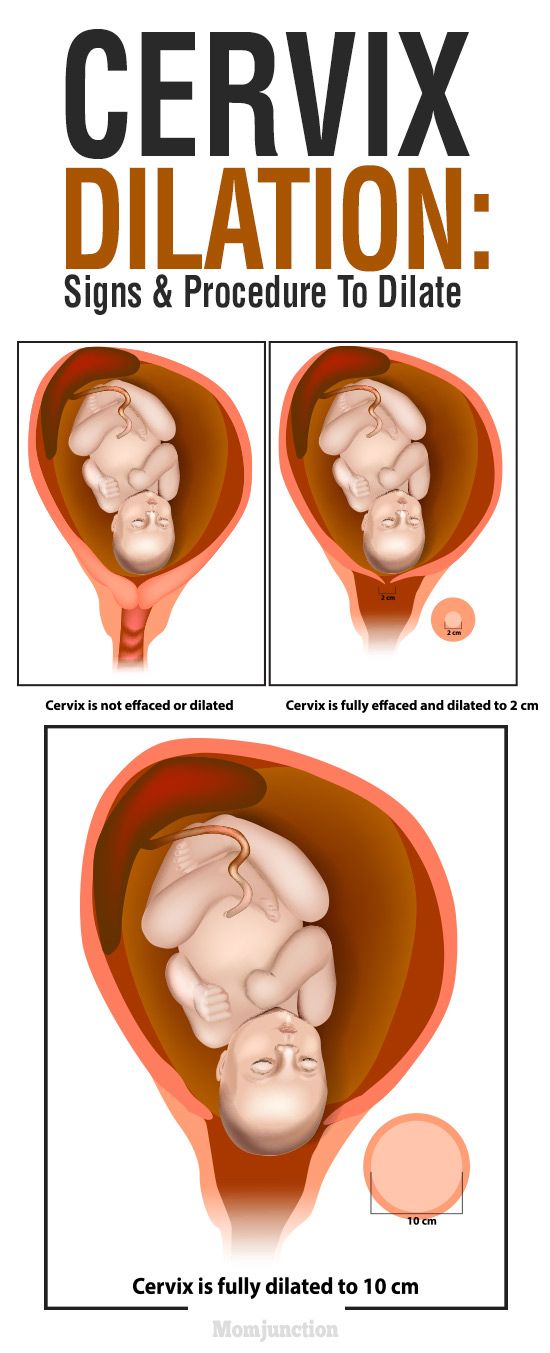 At this time, the soft birth canal is examined and, if there are gaps, then sutures are applied with preliminary anesthesia. After the examination, the puerperal is transferred to the postpartum department. nine0008
At this time, the soft birth canal is examined and, if there are gaps, then sutures are applied with preliminary anesthesia. After the examination, the puerperal is transferred to the postpartum department. nine0008
How to make childbirth easier
Childbirth is a hard physical strain. A pregnant woman needs to learn how to use her energy sparingly. Fear of labor pain interferes with the proper course of childbirth. To learn how to manage labor pain, a pregnant woman must master some techniques.
First of all, it concerns the posture during childbirth. At the beginning of labor, when the contractions are still irregular and short, you can choose the position of the body that will be most convenient. However, lying on your back is not recommended, because in this position the fetal head compresses the mother's large blood vessels, reducing blood flow to the placenta. nine0008
A simple and important rule is to urinate frequently. It is necessary to urinate every two hours, as a full bladder prevents the fetal head from descending into the pelvic cavity.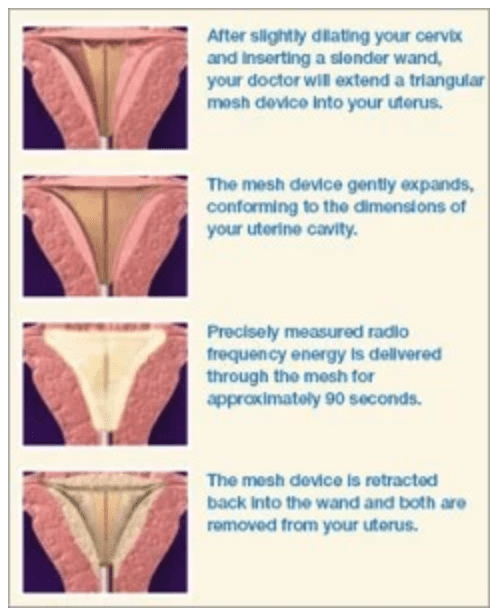
In the active stage of labor, when contractions are frequent, it is also necessary to regularly change the position of the body, trying not to lie on your back. If doctors allow you to walk, this should be used. You can kneel in bed, leaning on a chair, that is, tends to change the position of the body more often.
Recently, some maternity hospitals recommend that the first stage of labor be carried out in a warm water bath. Immersion in warm water relieves painful contractions and has a calming effect on the woman in labor. However, the second stage of labor must be carried out traditionally. When the expulsion of the fetus begins, the attempts are delayed, it is possible, if the doctor allows, to squat down during the fight, since in this position the dimensions of the pelvis increase and the head of the fetus falls more easily. Between contractions, it is better to lie on your side or take a knee-elbow position. When attempts appear and the birth of the fetus begins, the woman in labor is transferred to another ward, to a special bed designed for childbirth. Here, usually the medical staff manages the position of the mother, facilitating childbirth. nine0008
Here, usually the medical staff manages the position of the mother, facilitating childbirth. nine0008
It is very important for a woman to learn how to breathe properly during contractions and to relax completely between them. During contraction, due to muscle contraction, the fetus receives less oxygen. Therefore, its lack in these moments must be compensated by proper breathing.
In the first stage of labor, when contractions are repeated after 8-10 minutes and last for 40-50 seconds, it is necessary to use the first type of breathing - slow and deep.
Childbirth is less painful and more gentle for the fetus, when the woman in labor alternately walks, then lies on her side, that is, the active position alternates with the resting position. nine0008
When contractions become more intense, recur after 5-6 minutes and last about one minute, it is recommended to use shallow breathing (second type). With the beginning of the fight, it is better to make several deep, slow breaths according to the first type, and with the increase in the fight, you need to switch to shallow breathing, but then, at the end of it, switch back to slow and deep breathing.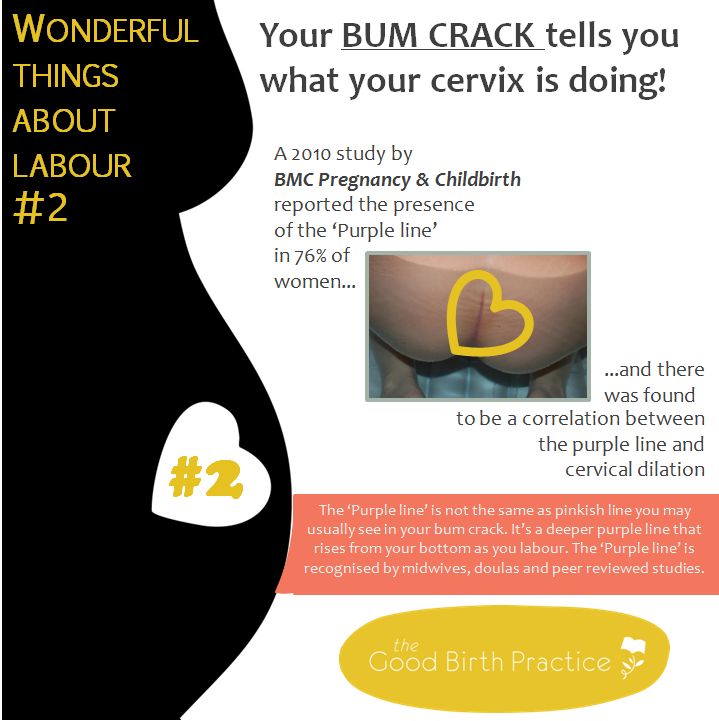
At the end of the first stage of labor, when contractions are stronger, repeat after 2-3 minutes and last 60-90 seconds, shallow and fast breathing should be applied. It is like a dog breathing with its mouth open on a hot day. So you need to breathe only at the height of the fight. With the beginning of the fight, you can apply the first, and then move on to the second and third types of breathing.
When pushing, it is also useful to use the third type of breathing, taking small intervals to inhale air. At this time, do not strain the abdominal muscles. At the same time, the head of the fetus is not squeezed out by attempts, but, as it were, is pushed by exhalations, and the child is born easier. nine0008
It is best to remain relaxed during the contraction. But this relaxation is not passive, but active - a conscious process that requires concentrated attention. Here, the woman in labor should use the relaxation techniques that she mastered during pregnancy. During this period, the self-hypnosis formula is applied: “I am calm. Contraction is an indicator of labor activity. Gradually, the contractions will intensify. My breathing is even and deep. The muscles are relaxed. The fight is over, after that there will be a rest period. nine0008
Contraction is an indicator of labor activity. Gradually, the contractions will intensify. My breathing is even and deep. The muscles are relaxed. The fight is over, after that there will be a rest period. nine0008
There is an idea that childbirth is necessarily accompanied by pain. It is the rooted fear and expectation of pain that become, especially in impressionable, nervous women, factors that intensify unpleasant sensations and raise them to the degree of pain.
Obstetricians are well aware that the normal course of childbirth is not necessarily accompanied by pain. In about 20% of women, childbirth is accompanied by only minor pain. Moreover, women of some nationalities do not know at all what pain during childbirth is. nine0008
Don't be afraid of pain! Even if it occurs, the doctor will be able to alleviate it, modern obstetrics has great opportunities for this.
Widespread use in clinical practice has found a variety of painkillers, used in doses that are absolutely harmless to the mother and fetus.
